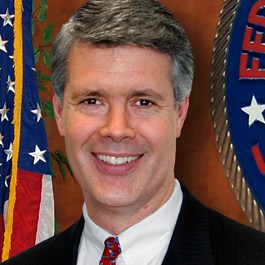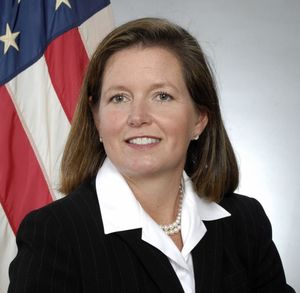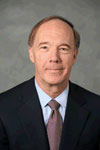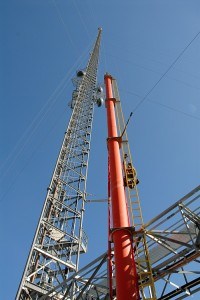
Person County, North Carolina
For north-central North Carolina, it’s often not a matter of how many choices you have for broadband service — it’s whether you can obtain any service at all.
Person County, located just south of the Virginia border, is a good example. The county’s 36,000 residents technically reside in North Carolina’s Research Triangle, a high-tech growth area. You wouldn’t know it from the broadband options available in many parts of the county, however.
The dominant phone company, CenturyLink (formerly EMBARQ), offers DSL service in the larger communities in Person County, but wide areas remain without any service at all.

Randy King
A Roxboro-based computer store and Internet Service Provider decided that with CenturyLink unwilling to expand into low population density areas to supply service, they would, with the help of broadband stimulus funding available from the Obama Administration.
Randy King, president of Electronic Solutions, Inc. (ESI), planned to expand broadband into 26 previously unserved Person County areas, and filed a stimulus application requesting $3 million in funding to begin construction.
King believes wireless broadband is the most cost-effective way to reach parts of the 400 square mile county that are simply too rural to upgrade wired service. Today, that’s nearly 40 percent of the county that still does not have access to broadband service. The Person County High Speed Internet Committee and the County Commissioners endorsed ESI’s proposal.
But CenturyLink would have none of it, despite the fact it was not willing to provide service to those unserved areas either. The phone company filed an objection with the agency administering the stimulus program claiming ESI would be overbuilding a competing broadband provider in its service area:
 CenturyLink can certify that its affiliates currently offer broadband service in some or all of the applicant’s proposed service areas. We attach a representative sample of areas where the application overlaps our existing broadband deployment. This data is not exhaustive; the application may include other areas also currently served with broadband by CenturyLink or other providers. We will provide additional information on request if that will further assist the agency’s review.
CenturyLink can certify that its affiliates currently offer broadband service in some or all of the applicant’s proposed service areas. We attach a representative sample of areas where the application overlaps our existing broadband deployment. This data is not exhaustive; the application may include other areas also currently served with broadband by CenturyLink or other providers. We will provide additional information on request if that will further assist the agency’s review.
CenturyLink also provides data showing broadband availability in local telephone exchanges within the proposed service areas. This includes areas served by CenturyLink and/or other broadband providers. This data further shows the applicant would duplicate and overlap existing broadband services in the proposed service areas.
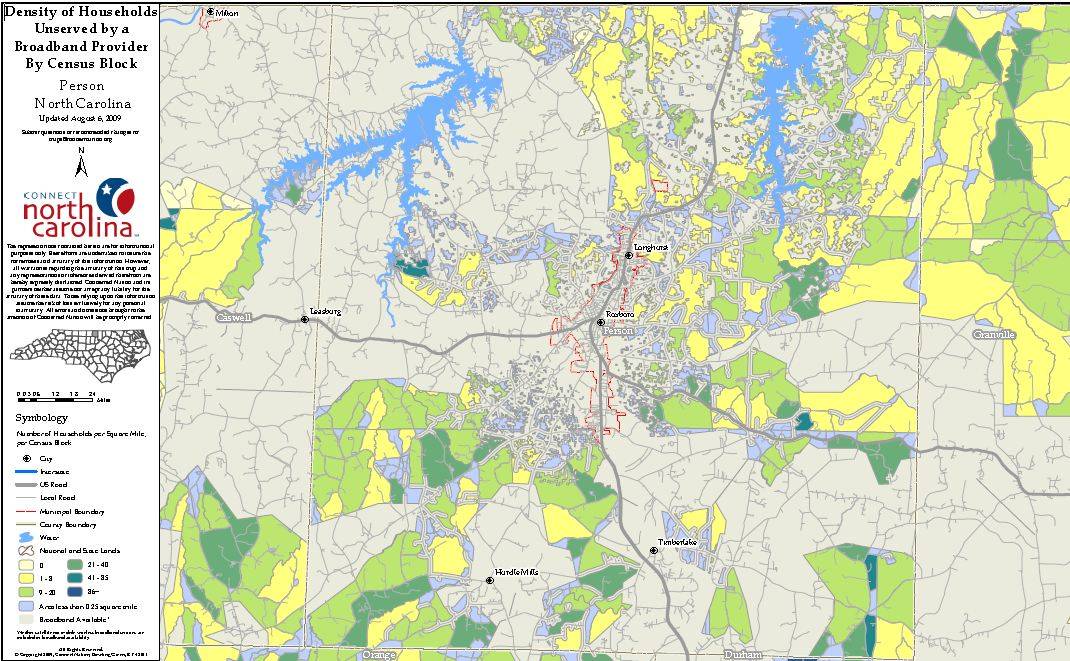
Connected North Carolina's map shows large areas in grey that suggest broadband service is already available. (click to enlarge)
Because the government will judge the merit of applications based, in part, on reaching the unserved, map data purporting to illustrate who does and who does not have access to broadband service is critically important to applicants. Some providers have used map data produced by a politically well-connected group filled with telecom industry executives that has spent millions of taxpayer dollars and produced maps that are less than illustrative of the true nature of broadband service. When a map from Connected Nation’s North Carolina chapter can show citizens have access to broadband, even when they do not, what’s a regulator to do but consider that stimulus grant application unnecessary.
Randy King, President of ESI, has responded to the CenturyLink opposition:
“We are extremely disappointed that CenturyLink has opposed the Person County project. The project would provide high speed Internet (broadband) in areas that currently do not have service in our county. CenturyLink as recently as April 2009 met with county officials and members of the public and stated that they did not intend to expand DSL in low density areas which do not make economical sense. We are now aware that CenturyLink is not only not going to serve these areas but is attempting to block anyone else from serving these areas.”
ESI claims its wireless system could deliver more capacity to Person County’s rural unserved than CenturyLink provides its more urban counterparts.
“It should be noted that the wireless system will have at minimum 50-100Mbps capability at each tower site which far exceeds current DSL speed of 1-10Mbps. This allows customers to have sufficient bandwidth to have services such as VOIP, IPTV and streaming capabilities whereas DSL is not capable,” King writes.
King is also concerned that CenturyLink won’t provide true detailed maps of exactly what service it provides in what areas.
Person County and area residents have been requesting street level coverage maps from CenturyLink and Charter (the city’s cable company) for years without success. King wants the ability to review these maps, preferably in color with speed capabilities identified down to the 911 address location. That way, he says, he can work on building capacity to areas not getting service at all.
Providers have traditionally been loathe to disclose this information to the public, and even government regulators, claiming it represents proprietary, competitive information. That leaves everyone but providers guessing about what broadband service really looks like across America.

The more credible e-NC mapping project shows large swaths of southern Person County without any broadband options at all. (click to enlarge)
Kevin McCarter, CenturyLink’s general manager for central North Carolina seems primarily concerned with potential government funding of his competition. McCarter told The Courier-Times CenturyLink “interpreted that” the towers King proposed to place in order to provide wireless service “would cover 95 percent” of the entire county. King explained that his intent was not to cover the whole county with wireless access, but to place towers so that those living in areas of the county not currently served by DSL lines would have the option of wireless broadband. He said he never intended his service to replace the DSL lines CenturyLink has in place.
That ESI doesn’t seem intent on competing directly with CenturyLink may have resulted in a breakthrough this month. The two companies met December 15th to discuss their respective broadband plans for Person County, and may have come to an agreement that could divide up the unserved and get them broadband service from one company or the other, but likely not both.
Jamie Averett Mitchell, spokesperson for CenturyLink, issued the following statement Monday: “On Tuesday, Dec, 15, representatives from CenturyLink met with Randy King, president of Electronic Solutions, Inc., to review broadband coverage for Person County. Maps detailing both existing and planned coverage areas were presented and reviewed by both parties. Areas that were not covered on either company’s maps were discussed and both companies are aware of those sites. CenturyLink and ESI are working together to determine the most efficient way to provide 100 percent of the population in Person County with the best broadband coverage possible.”
So it seems that broadband applications that do not challenge incumbent providers are acceptable, but those that could expand the quality of service to those living with rural, slow speed DSL service are not.
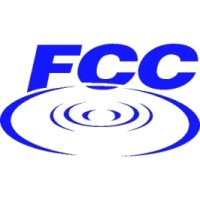 Under stiff opposition from the nation’s broadcasters, the Federal Communications Commission has dropped a proposal to reallocate a significant chunk of the UHF broadcast television spectrum to wireless communications companies.
Under stiff opposition from the nation’s broadcasters, the Federal Communications Commission has dropped a proposal to reallocate a significant chunk of the UHF broadcast television spectrum to wireless communications companies.

 Subscribe
Subscribe